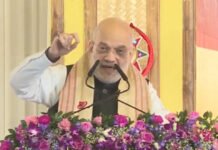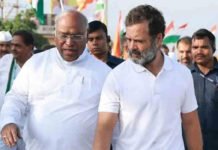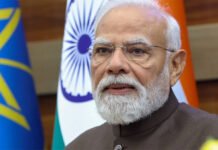The analysis provided by political expert Neeraj Gupta offers invaluable insights into the complex dynamics of Indian politics, highlighting the shifting fortunes of various parties across different regions. By understanding these nuances, political observers can better anticipate future trends and developments in India’s vibrant democracy
Region-Wise Comparison: 2019 vs. 2024 : Political Analyst Neeraj Gupta has meticulously prepared an in-depth analysis of the Lok Sabha Elections for both 2019 and 2024, shedding light on the shifts in political landscape across different regions of India. By examining the results of the elections, we can discern the trajectory of various political parties, identifying where they have gained ground and where they have encountered setbacks.
North India: BJP’s Diminished Dominance
The northern region of India, comprising 12 states and union territories, witnessed a significant shift in the Lok Sabha elections of 2024 compared to 2019. In 2019, the Bharatiya Janata Party (BJP) clinched a formidable victory, securing 146 out of 205 seats. However, in 2024, their dominance waned as they could only muster 90 seats. This decline in BJP’s seat share was accompanied by a rise in seats won by other parties, indicating a more competitive political landscape.
South India: Rise of Regional Parties
In South India, which encompasses eight states and union territories, regional parties emerged as frontrunners in the Lok Sabha elections of 2024. While the Congress and BJP maintained a relatively similar seat count compared to 2019, regional parties surged ahead, securing a total of 60 seats. This shift underscores the growing influence of regional politics in the southern states, challenging the traditional dominance of national parties.
West India: BJP’s Setback and Congress’s Gain
The western region of India, comprising states like Gujarat, Maharashtra, and Goa, witnessed a reversal of fortunes for the BJP and Congress. In 2019, BJP triumphed with 51 out of 78 seats, but in 2024, their seat share plummeted to 36. Conversely, Congress saw an improvement, securing 15 seats compared to just two in the previous election. This suggests a reconfiguration of political dynamics in the western states, with voters expressing a nuanced preference for different parties.
Eastern India: BJP’s Continued Dominance
Eastern India, comprising states like West Bengal and Odisha, remained a stronghold for the BJP in the Lok Sabha elections of 2024. Despite facing stiff competition from other parties, BJP managed to maintain its dominance, securing 45 out of 88 seats. While Congress made modest gains compared to 2019, the overall landscape remained favorable for the ruling party, reaffirming its stronghold in the region.
Central India: BJP’s Overwhelming Victory
In Central India, which includes states like Madhya Pradesh and Chhattisgarh, BJP showcased its dominance yet again in the Lok Sabha elections of 2024. With a staggering victory of 39 out of 40 seats, BJP reaffirmed its stronghold in the region, leaving Congress with just one seat. This overwhelming victory underscores the enduring support for BJP in the heartland states of India.
Looking Ahead: BJP’s Prospects for 2029
Political analyst Neeraj Gupta predicts a bright future for the Bharatiya Janata Party (BJP), despite its setbacks in certain regions during the 2024 Lok Sabha elections. By acknowledging and rectifying past mistakes, Gupta believes that BJP is poised to secure a resounding victory in 2029, potentially winning as many as 400 plus Lok Sabha seats. This optimistic outlook reflects the resilience and adaptability of BJP as a political force in India’s ever-evolving landscape.
In conclusion, the analysis provided by political expert Neeraj Gupta offers invaluable insights into the complex dynamics of Indian politics, highlighting the shifting fortunes of various parties across different regions. By understanding these nuances, political observers can better anticipate future trends and developments in India’s vibrant democracy.
















